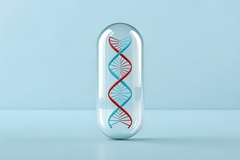“Excellent safety record”: Addressing ashwagandha health concerns with supporting research

27 Aug 2024 --- Botanical experts underscore that a decent amount of data exists to address most of the growing safety concerns of ashwagandha (Withania somnifera) among European food safety authorities, over the botanical’s purported use as an abortifacient, indications of an influence on thyroid and immune function and regarding the potential hepatotoxicity, which is only now being assessed. We examine the botanical’s safety record with these experts and explore how to address the ongoing legal scrutiny in Europe.
In part two of this three-part series on ashwagandha, Nutrition Insight discusses available data on the botanical’s safety and its potential in addressing regulators’ concerns. In our last installment, we will discuss with two key industry players how the regulatory scrutiny affects the market.
Evaluations dating back to 2013 refer to limited available data on toxicology, safety, historical exposure, dosages and use as a food in Europe. As a result, the botanical has been banned in food supplements in Denmark, and Dutch and French authorities advise against its consumption in specific population groups.
However, Thomas Brendler, Ph.D., an expert in medicinal plant use and regulation, says there is “enough data to address the issues.”
“A massive safety dossier has been compiled, and there’s a lot of data now that wasn’t available back then,” he states. “Overall, we probably have enough data to address all the concerns — it just needs to be done.”
Relatively safe plant
Stefan Gafner, Ph.D., chief science officer at the American Botanical Council, tells us that the organization’s HerbMedPro database lists “close to 100 clinical studies and systematic reviews” on ashwagandha. This interactive database provides access to the scientific data underlying the use of herbs for health and is continuously updated as information is compiled.
“Many of the beneficial effects of ashwagandha, especially related to its adaptogenic properties, are supported by human clinical trials. If all the safety data and the widespread use of ashwagandha are considered, it appears that ashwagandha has an excellent safety record. However, this does not mean that there aren’t any adverse events.”
“It does not surprise me that case reports of liver injury have appeared since the popularity of ashwagandha has seen a sizeable increase in Europe and North America over the past years. With so many people using ashwagandha, one can expect that adverse event reports will be more frequently published, as some of the rare negative side effects in sensitive people will eventually show up.”
.png) We recently sat down with Stefan Gafner to discuss safe and responsible use of botanical supplements.Gafner details that based on the available data, it’s likely that in scarce instances, people with individual sensitivity may experience adverse effects on their liver when using ashwagandha.
We recently sat down with Stefan Gafner to discuss safe and responsible use of botanical supplements.Gafner details that based on the available data, it’s likely that in scarce instances, people with individual sensitivity may experience adverse effects on their liver when using ashwagandha.
He also points to ongoing efforts to mine publicly available databases on adverse events linked to ashwagandha consumption.
“All indications point to it being a relatively safe plant, but having more such data available will be helpful. More human data looking at additional clinical parameters in addition to liver enzyme concentrations should give a broader view of ashwagandha safety end effects,” Gafner asserts.
Data to resolve issues
Brendler underscores that the current safety issues can be resolved based on pre-clinical and clinical studies.
“A lot of research has been done over the last ten years. For instance, this fundamental question of what the right dose is, we can easily answer at this point because we have around 50 clinical trials with ashwagandha as a single ingredient which all operate more or less on the same dosing level. ”
He details that a team of botanical experts, including Gafner, aims to review ashwagandha safety based on available clinical and pre-clinical data dedicated to one issue at a time.
For example, he suggests publishing an ethnobotanical and ethnopharmacology review that considers the reported abortive effect, another publication dedicated to the endocrinological effect, one on the immunomodulatory effect and another examining the hepatotoxicity data.
“Deal with one issue at a time so that we have a body of data or publications as a result that we can publication dedicated to present to the competent authorities to assist with their assessment.”
.jpg) Brendler underscores that the current safety issues can be resolved based on pre-clinical and clinical studies.Ashwagandha as an abortifacient
Brendler underscores that the current safety issues can be resolved based on pre-clinical and clinical studies.Ashwagandha as an abortifacient
Gafner states that information on the abortifacient properties of ashwagandha is limited.
“A study on the effects of ashwagandha root powder on reproduction in mice mentions that ashwagandha is used in Sind (West Pakistan) to induce abortion. However, the statement is made without citing a reference. Hence, the veracity of this statement is difficult to assess.”
He refers to Brendler’s research, stating that an abortive effect was first attributed to ashwagandha by Stewart 1869, “Punjab Plants.”
“Where he writes, ‘At least one case has occurred in the Punjab in which the root was used to effect criminal abortion, and I learned that in Sind this practice is not uncommon.’”
“However, there are no data on dosage and potential other plants or procedures that might have been used in conjunction with ashwagandha for abortion,” Gafner underscores. “Hence suggesting that ashwagandha may be unsafe based on an 1869 book on traditional use of Punjabi plants is highly questionable in my opinion.”
Brendler adds that subsequent authors picked up on this original reference — “this is how it spreads through the literature.”
A couple more contemporary ethnopharmacological investigations support the claim. “I think this may be a case of author bias because what may have been reported as a uterotonic effect turns turns into abortive with reference to the literature,” he explains. “Had there not been this precedent report of an abortive effect, authors would probably have reported it as uterotonic, and that’s a big difference.”
 The experts note there is limited data on ashwagandha’s role as an abortifacient, which is likely linked to an 1869 book on traditional use.Endocrinological concerns
The experts note there is limited data on ashwagandha’s role as an abortifacient, which is likely linked to an 1869 book on traditional use.Endocrinological concerns
Brendler notes that an impact on the endocrine system is not adverse by default; it depends on from which perspective one looks at it. The endocrine system is a complex network of glands, such as the thyroid gland, and organs, which produce and release hormones. Hormone concentrations are maintained by feedback loops, including other hormones, proteins, and nerve cells, thus regulating metabolism, stress response and reproduction, among others.
According to Gafner, ashwagandha’s effects on thyroid function are based on a clinical study where 10 of 60 patients showed slight changes in thyroid function.
“Three patients received an ashwagandha extract, and seven were in the placebo group. While the authors concluded that ashwagandha may increase thyroid function (based on the three patients having slightly higher levels of the thyroid hormone thyroxine throughout the study), they did not conclude that the placebo decreased thyroid function, even though more than twice the number of patients in the placebo group showed a decrease in thyroxine.”
“However, since the current information on the effects of ashwagandha on thyroid function is minimal, it is certainly an area in which more research is needed,” he underscores.
“Depending on where you position yourself, the impact could be concerning or positive,” he illustrates. “It requires clarification — a clear setting, clear dosing instructions and potentially caution statements.”
He also points out that concerns over the immunomodulatory effect of ashwagandha could easily be addressed by a caution statement, just like with other immunostimulants and botanicals in the marketplace. “Echinacea carries a warning, so why not settle for that? There are issues to be observed, cautions or potential side effects to be acknowledged, but we can do that.”
Liver health impact
Gafner notes that the research community has become much more interested in the alleged liver toxic effects of ashwagandha, especially over the past seven or eight years since the publication of the first case reports in Japan.
“A 2023 systematic review reported 23 cases to date, although not all of them linked to dietary supplement use (a small number from India included ashwagandha jam or syrup). Causality is a matter of debate in many case reports, but in several of them, ashwagandha has been identified as the ‘highly likely’ or ‘probable’ cause.”
 Ashwagandha supplements are increasingly popular to relieve stress and anxiety, boost focus and promote sleep.Meanwhile, Brendler points out that reports of hepatotoxicity don’t seem to be placed at the center of attention in evaluation reports on ashwagandha.
Ashwagandha supplements are increasingly popular to relieve stress and anxiety, boost focus and promote sleep.Meanwhile, Brendler points out that reports of hepatotoxicity don’t seem to be placed at the center of attention in evaluation reports on ashwagandha.
“Regulators seem to be more concerned about the safe dosing and the purported role as an abortive. The other effects need contextualizing,” he explains. “This is being addressed as we speak.”
European action
Brendler underscores that the current regulatory issues for ashwagandha are “a homemade problem on both sides.” He notes that manufacturers wasted valuable time to do something about the concerns while regulators are “sitting on their hands.”
Most risk assessments and evaluations conducted in Europe did not offer an opportunity for public comments, except for the ongoing call for evidence by the UK Food Standards Agency.
Brendler highlights that “if the European Commission were to mandate the European Food Safety Authority to conduct a safety assessment, there would be an opportunity for public comment. That’s when data needs to be submitted.”
“What may or should happen next is for the European Commission to act,” he underscores. “This could be another risk assessment, an Article 8 procedure, or finally processing the botanicals’ on-hold claims.”
The EU Heads of Food Safety Agencies prioritized ashwagandha for an Article 8 procedure, which could lead to its ban for use in food supplements. However, Bendler believes that there are other candidates for which this procedure would be more appropriate for this procedure, such as St. John’s wort.
This botanical has “well-known side effects and use restrictions, and is probably better off in a more controlled setting, such as a traditional herbal medicine, a category that is currently not open to ashwagandha.”
By Jolanda van Hal












